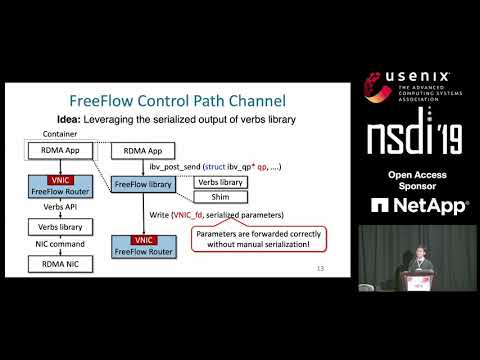Description:
Explore a software-based RDMA virtualization framework designed for containerized cloud environments in this USENIX conference talk. Dive into the challenges of integrating RDMA networking with containerization and learn how FreeFlow addresses these issues. Discover how this solution provides isolation for multi-tenancy, portability for container migrations, and controllability for control and data plane policies. Examine the internal structure of verbs library, control path channel, and zero-copy synchronization in data path. Evaluate FreeFlow's performance in supporting low latency and high throughput, and understand its impact on applications like TensorFlow and Spark. Gain insights into the future of high-performance networking in containerized cloud environments.

FreeFlow - Software-based Virtual RDMA Networking for Containerized Clouds
Add to list
#Conference Talks
#USENIX Symposium on Networked Systems Design and Implementation (NSDI)
#Programming
#Cloud Computing
#Cloud Application Development
#Computer Science
#Computer Networking
#Network Engineering